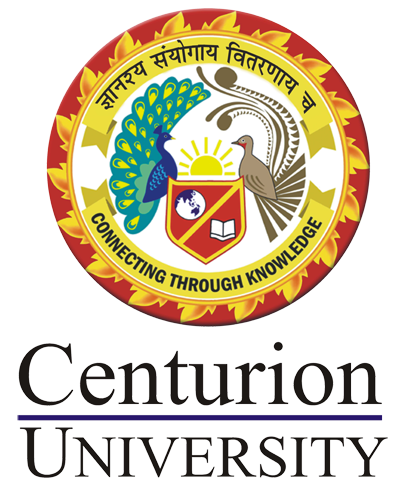Trend into the PRS having Level Is Largely In keeping with Fashion in the Skeletal Prominence
Performance such caveats at heart, PRS can be applied so you’re able to old communities because of recent technological improvements having dramatically increased aDNA try versions. They have already considering superior understanding towards demographic and evolutionary record away from each other progressive and you will archaic people internationally (23 ? –25), particularly in Europe, and allow me to track the advancement of variants hidden phenotypes ranging from pigmentation so you’re able to diet (twenty-six ? ? –29). In principle, PRS placed on ancient communities could furthermore allow us to create inferences concerning evolution out of state-of-the-art traits. A number of studies have utilized PRS and make predictions about the cousin statures away from old communities (31 ? –31) however, examined not all the hundred or so somebody altogether and you can didn’t examine the predictions with prominence mentioned off skeletons. Here, we evaluate measured skeletal study in order to hereditary predictions and you can myself have a look at new hereditary share in order to peak separate regarding environment effects pretending throughout the creativity.
PRS and Skeletal Measurements.
We built-up had written aDNA study from just one,071 ancient folks from West Eurasia (west of 50° E), old so you’re able to between 38,100 and you can 1100 BP (twenty-seven, 31, 29, thirty-two ? ? ? ? ? ? ? ? ? ? ? ? ? ? ? ? ? ? ? ? ? ? ? ? –57). Having fun with GWAS summation statistics to possess height from the British Biobank (generated and made available because of the Neale Research: we determined peak PRS for each and every private, using a great P value cutoff out-of 10 ?6 , clumping variants into the 250-kb windows, and you will substitution forgotten genotypes with the indicate round the anybody (Methods). I make reference to it since the PRS(GWAS). Due to issues about GWAS impression systems becoming excessive by the recurring population stratification, i in addition to calculated a good PRS where we made use of GWAS P thinking to select unmarried-nucleotide polymorphisms (SNPs), however, determined this new PRS playing with perception types projected off an inside-nearest and dearest test away from ?17,100 aunt pairs from United kingdom Biobank (Methods), and that i reference due to the fact PRS(GWAS/Sibs) and you will that needs to be unchanged of the stratification. I in addition to gotten stature quotes from one,159 somebody relationships in order to ranging from 33,700 and you can 1100 BP extracted from a more impressive dataset away from 2,177 people who have prominence and the entire body ratio rates off drastically done skeletons (4, 58). There’s limited overlap in these datasets (a dozen someone), nonetheless protection once attacks and you may generally a similar geographic metropolitan areas (Si Appendix, Fig. S1), as the hereditary analysis contain more people from subsequent east (31 to help you 50° E) as compared to skeletal analysis. I split up these people on 5 organizations according to date: Very early Top Paleolithic (>twenty-five,100 BP) (EUP), Later Higher Paleolithic (twenty-five,100000 so you can 11,100000 BP) (LUP), Mesolithic (11,100 to 5500 BP), Neolithic (8500 to 3900 BP), and you will blog post-Neolithic (5000 to help you 1100 BP, such as the Copper and Bronze age periods, along with afterwards symptoms), fixing somebody from the overlapping periods using either archaeological otherwise hereditary perspective (Methods). These teams broadly correspond to transitions in both archaeological society and you can hereditary origins (33, 38, 59) (Lorsque Appendix, Fig. S1 C and you may D and Desk S1).
Results
Each other PRS and skeletal prominence reduced from the EUP so you can Mesolithic attacks and you can increased within Neolithic and you will blog post-Neolithic (Au moment ou Appendix, Fig. S2). Fitted category (time frame) because the an effective covariate, i located a life threatening affect PRS(GWAS) (ANOVA P = step 1.9 ? ten ?9 ), PRS(GWAS/Sibs) (P = 0.045), and angelreturn you can skeletal prominence (P = dos.8 ? ten ?11 ). There was zero proof difference in LUP, Mesolithic, and you can Neolithic organizations (Quand Appendix, Fig. S3 A and you will B), so we combined such step three communities (we consider the fresh new combined classification given that LUP-Neolithic). We find one to PRS(GWAS) about LUP-Neolithic several months try 0.47 SD below from the EUP (P = 0.002), and 0.forty SD down (P = 8.eight ? 10 ?eleven ) than in the latest post-Neolithic several months (Fig. 1A). PRS(GWAS/Sib) shows an incredibly similar pattern (Fig. 1B), appearing this particular is not due to differential relatedness regarding new ancient men and women to new prepared establish-go out GWAS communities. Skeletal stature suggests a beneficial qualitatively comparable development into the genetic predictions (Fig. 1C), with a 1.5 SD (nine.6 cm; P = 2.9 ? ten ?7 ) difference in EUP and LUP-Neolithic and you can an excellent 0.27 SD (step 1.8 cm; P = 3.6 ? 10 ?5 ) difference between LUP-Neolithic and blog post-Neolithic. Wide patterns of improvement in stature over time are therefore uniform that have genetic predictions.
Copyright © 2020 Centurion University of Technology & Management
Designed & Developed By I.T Team - CUTM

